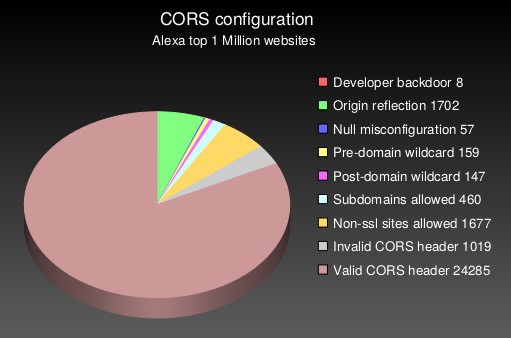Battery Status API for Power Management Awareness
Battery Status API for Power Management Awareness: A Comprehensive Guide Table of Contents Introduction Historical Context Technical Overview of Battery Status API 3.1. How It Works 3.2. Web-Standard Adoption Code Examples 4.1. Basic Usage 4.2. Monitoring Battery Changes 4.3. Battery Health Awareness Edge Cases and Advanced Implementation Techniques 5.1. Handling Permissions 5.2. Fallback Mechanisms Comparison with Alternative Approaches Real-World Use Cases Performance Considerations 8.1. Optimizing Battery Status Queries 8.2. Impact on User Experience Potential Pitfalls 9.1. Security and Privacy Concerns 9.2. Debugging Techniques Conclusion Further Reading and Resources 1. Introduction The Battery Status API is a web API that allows developers to obtain information about the system's battery charge level and charging status. With the increasing reliance on mobile devices and the necessity for power management awareness in web applications, understanding this API is critical for developers aiming to create efficient, user-friendly applications. In this comprehensive article, we will delve deep into the intricacies of the Battery Status API, exploring its historical context, technical workings, and practical implications. This guide aims to be the definitive resource for senior developers who wish to integrate power management awareness into their applications effectively. 2. Historical Context The Battery Status API first emerged as a part of the broader trend of improving mobile browser capabilities, enhancing user experience, and optimizing energy consumption patterns. Originally proposed by the W3C Device APIs Working Group in the early 2010s, the API was designed to address the needs for mobile web applications to be aware of power management issues, especially as smartphones and tablets began to dominate internet usage. Over the years, major browser vendors such as Google Chrome and Mozilla Firefox acknowledged its potential, leading to its eventual implementation in most major browsers. However, it also raised concerns over user privacy and security, resulting in varying levels of support and implementation. 3. Technical Overview of Battery Status API 3.1. How It Works The Battery Status API exposes an interface BatteryManager, which provides the current state of the battery and allows web applications to monitor changes to this state. The key properties of the BatteryManager include: batteryLevel: A float value between 0.0 and 1.0 indicating the charge level of the battery. charging: A boolean value indicating whether the battery is currently charging. dischargingTime: An integer that indicates the estimated remaining time (in seconds) until the battery is fully depleted. chargingTime: An integer that indicates the estimated remaining time (in seconds) until the battery is fully charged. 3.2. Web-Standard Adoption As with many web APIs, the Battery Status API's adoption has been a subject of discussion. Its implementation varies across browsers, and it is part of the broader goal of progressive enhancement where developers can enable features based on the capabilities of a user’s device. It's worth mentioning that due to privacy and security implications, some browsers like Firefox have begun to gradually phase out the API, reducing the exposure of sensitive information regarding a user's device. 4. Code Examples 4.1. Basic Usage Here is a straightforward implementation of the Battery Status API to access battery information: if ('getBattery' in navigator) { navigator.getBattery().then(function(battery) { console.log(`Battery level: ${battery.level * 100}%`); console.log(`Is charging: ${battery.charging}`); console.log(`Discharging time: ${battery.dischargingTime}s`); console.log(`Charging time: ${battery.chargingTime}s`); }); } else { console.log('Battery Status API not supported on this browser.'); } 4.2. Monitoring Battery Changes To keep track of changes in battery status, we can set up event listeners: navigator.getBattery().then(function(battery) { function updateBatteryStatus() { console.log(`Battery level: ${battery.level * 100}%`); console.log(`Is charging: ${battery.charging}`); } battery.addEventListener('levelchange', updateBatteryStatus); battery.addEventListener('chargingchange', updateBatteryStatus); }); 4.3. Battery Health Awareness An advanced implementation could involve adjusting functionalities based on battery status. For instance, a web application might switch to a lighter mode if the battery is low. function adjustAppForBatteryStatus(battery) { if (battery.level

Battery Status API for Power Management Awareness: A Comprehensive Guide
Table of Contents
- Introduction
- Historical Context
- Technical Overview of Battery Status API 3.1. How It Works 3.2. Web-Standard Adoption
- Code Examples 4.1. Basic Usage 4.2. Monitoring Battery Changes 4.3. Battery Health Awareness
- Edge Cases and Advanced Implementation Techniques 5.1. Handling Permissions 5.2. Fallback Mechanisms
- Comparison with Alternative Approaches
- Real-World Use Cases
- Performance Considerations 8.1. Optimizing Battery Status Queries 8.2. Impact on User Experience
- Potential Pitfalls 9.1. Security and Privacy Concerns 9.2. Debugging Techniques
- Conclusion
- Further Reading and Resources
1. Introduction
The Battery Status API is a web API that allows developers to obtain information about the system's battery charge level and charging status. With the increasing reliance on mobile devices and the necessity for power management awareness in web applications, understanding this API is critical for developers aiming to create efficient, user-friendly applications.
In this comprehensive article, we will delve deep into the intricacies of the Battery Status API, exploring its historical context, technical workings, and practical implications. This guide aims to be the definitive resource for senior developers who wish to integrate power management awareness into their applications effectively.
2. Historical Context
The Battery Status API first emerged as a part of the broader trend of improving mobile browser capabilities, enhancing user experience, and optimizing energy consumption patterns. Originally proposed by the W3C Device APIs Working Group in the early 2010s, the API was designed to address the needs for mobile web applications to be aware of power management issues, especially as smartphones and tablets began to dominate internet usage.
Over the years, major browser vendors such as Google Chrome and Mozilla Firefox acknowledged its potential, leading to its eventual implementation in most major browsers. However, it also raised concerns over user privacy and security, resulting in varying levels of support and implementation.
3. Technical Overview of Battery Status API
3.1. How It Works
The Battery Status API exposes an interface BatteryManager, which provides the current state of the battery and allows web applications to monitor changes to this state. The key properties of the BatteryManager include:
-
batteryLevel: A float value between 0.0 and 1.0 indicating the charge level of the battery. -
charging: A boolean value indicating whether the battery is currently charging. -
dischargingTime: An integer that indicates the estimated remaining time (in seconds) until the battery is fully depleted. -
chargingTime: An integer that indicates the estimated remaining time (in seconds) until the battery is fully charged.
3.2. Web-Standard Adoption
As with many web APIs, the Battery Status API's adoption has been a subject of discussion. Its implementation varies across browsers, and it is part of the broader goal of progressive enhancement where developers can enable features based on the capabilities of a user’s device.
It's worth mentioning that due to privacy and security implications, some browsers like Firefox have begun to gradually phase out the API, reducing the exposure of sensitive information regarding a user's device.
4. Code Examples
4.1. Basic Usage
Here is a straightforward implementation of the Battery Status API to access battery information:
if ('getBattery' in navigator) {
navigator.getBattery().then(function(battery) {
console.log(`Battery level: ${battery.level * 100}%`);
console.log(`Is charging: ${battery.charging}`);
console.log(`Discharging time: ${battery.dischargingTime}s`);
console.log(`Charging time: ${battery.chargingTime}s`);
});
} else {
console.log('Battery Status API not supported on this browser.');
}
4.2. Monitoring Battery Changes
To keep track of changes in battery status, we can set up event listeners:
navigator.getBattery().then(function(battery) {
function updateBatteryStatus() {
console.log(`Battery level: ${battery.level * 100}%`);
console.log(`Is charging: ${battery.charging}`);
}
battery.addEventListener('levelchange', updateBatteryStatus);
battery.addEventListener('chargingchange', updateBatteryStatus);
});
4.3. Battery Health Awareness
An advanced implementation could involve adjusting functionalities based on battery status. For instance, a web application might switch to a lighter mode if the battery is low.
function adjustAppForBatteryStatus(battery) {
if (battery.level < 0.2 && !battery.charging) {
console.log('Switching to power-saving mode.');
// Implement logic to reduce app resource usage
}
}
navigator.getBattery().then(function(battery) {
adjustAppForBatteryStatus(battery);
battery.addEventListener('levelchange', function() {
adjustAppForBatteryStatus(battery);
});
});
5. Edge Cases and Advanced Implementation Techniques
5.1. Handling Permissions
As the Battery Status API might expose sensitive user information, handling permissions is paramount. Although current browser implementations do not require explicit permissions for accessing battery information, it is essential to build abstractions that gracefully handle cases where permissions may be restricted or the API is unsupported—all while providing seamless user experiences.
5.2. Fallback Mechanisms
In cases where the Battery Status API is not supported or when dealing with unsupported browsers, consider implementing fallback mechanisms such as leveraging the navigator.onLine method for estimating network charges or integrating user-configurable power management settings.
6. Comparison with Alternative Approaches
While the Battery Status API provides a standard way to gauge the battery state, different strategies exist to manage device resources effectively. Progressive web applications (PWAs) can utilize service workers to cache resources or use network management techniques wherein low battery levels can trigger lighter assets, preventing the need for excessive data fetching.
Comparison Chart
| API/Technique | Use Case | Pros | Cons |
|---|---|---|---|
| Battery Status API | Battery awareness in web apps | Direct access to battery information | Limited browser support |
| Service Workers | Resource caching to save power | Reduces network calls | Complexity in setup |
| Network Management Techniques | Data optimization on low battery | Can improve experiences generally | Indirect battery awareness |
7. Real-World Use Cases
Industry-Standard Applications
- Social Media Platforms: Applications like Facebook or Twitter can optimize background data usage by utilizing battery status to reduce refresh rates or adjust media quality when the battery is low.
- Gaming: Mobile games can adjust graphics settings based on battery level, ensuring that users can enjoy longer gameplay without draining their device's power.
Example Implementation:
function optimizeVisualsForBattery() {
navigator.getBattery().then(function(battery) {
if (battery.level < 0.3 && !battery.charging) {
// Reduce graphics quality for better performance
console.log('Reducing graphics quality for battery savings');
// Implement graphics settings change here
}
});
}
8. Performance Considerations
8.1. Optimizing Battery Status Queries
Although querying battery data generally has low overhead, unnecessary frequent polling should be avoided to enhance performance. Instead, use event listeners to react to state changes, minimizing performance impact while still providing real-time updates.
8.2. Impact on User Experience
It is crucial to balance responsiveness with battery safety. Applications must implement strategies to prevent battery drain while ensuring accessibility. This might include delaying resource-heavy operations when battery is low or notifying users about power-saving settings.
9. Potential Pitfalls
9.1. Security and Privacy Concerns
As mentioned, the Battery Status API can lead to privacy issues if exploited to extract user patterns (e.g., charge patterns). Therefore, safeguard user privacy by ensuring code transparency and allowing fine-grain control over what data is collected.
9.2. Debugging Techniques
-
Console Debugging: Utilize
console.log()statements to debug your event listener functionalities to verify proper execution of functions upon battery state changes. - Network Inspector: Checking the Network tab in developer tools while simulating low battery scenarios can highlight potential performance issues resulting from web app behaviors.
10. Conclusion
The Battery Status API offers a powerful means for web developers to be aware of battery status and adapt their applications accordingly. While it comes with several challenges and privacy concerns, its correct implementation can lead to superior user experience, particularly for mobile applications. Senior developers should weigh the advantages and challenges carefully, utilizing the insights provided in this comprehensive guide to architect solutions that sensibly integrate battery awareness.
11. Further Reading and Resources
- W3C Battery Status API Specification
- Mozilla Developer Network (MDN) Documentation on Battery Status API
- Web Performance Optimization Techniques
- Understanding the Implications of Browser APIs
By following best practices illuminated in this article, developers can harness the Battery Status API to foster more adaptive, responsible, and efficient web applications, paving the way for an innovative future where power management is a design consideration from the ground up.






































































































































































![[The AI Show Episode 145]: OpenAI Releases o3 and o4-mini, AI Is Causing “Quiet Layoffs,” Executive Order on Youth AI Education & GPT-4o’s Controversial Update](https://www.marketingaiinstitute.com/hubfs/ep%20145%20cover.png)



























































































































![[DEALS] Microsoft 365: 1-Year Subscription (Family/Up to 6 Users) (23% off) & Other Deals Up To 98% Off – Offers End Soon!](https://www.javacodegeeks.com/wp-content/uploads/2012/12/jcg-logo.jpg)




![From Art School Drop-out to Microsoft Engineer with Shashi Lo [Podcast #170]](https://cdn.hashnode.com/res/hashnode/image/upload/v1746203291209/439bf16b-c820-4fe8-b69e-94d80533b2df.png?#)








































































































(1).jpg?#)































_Inge_Johnsson-Alamy.jpg?width=1280&auto=webp&quality=80&disable=upscale#)












































































































![Apple to Split iPhone Launches Across Fall and Spring in Major Shakeup [Report]](https://www.iclarified.com/images/news/97211/97211/97211-640.jpg)
![Apple to Move Camera to Top Left, Hide Face ID Under Display in iPhone 18 Pro Redesign [Report]](https://www.iclarified.com/images/news/97212/97212/97212-640.jpg)
![Apple Developing Battery Case for iPhone 17 Air Amid Battery Life Concerns [Report]](https://www.iclarified.com/images/news/97208/97208/97208-640.jpg)
![AirPods 4 On Sale for $99 [Lowest Price Ever]](https://www.iclarified.com/images/news/97206/97206/97206-640.jpg)

































![[Updated] Samsung’s 65-inch 4K Smart TV Just Crashed to $299 — That’s Cheaper Than an iPad](https://www.androidheadlines.com/wp-content/uploads/2025/05/samsung-du7200.jpg)


































































